

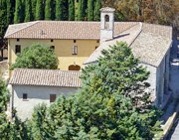
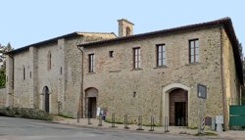
Armenian monks of the Order of St Basil fled from their own country when the Turks threatened it in the 13th century and settled in a number of Italian cities. Some of them settled in Perugia, where they acquired this church and its adjoining buildings from the canons of the Duomo in 1273. Pope Clement V granted indulgences in 1301, which helped to finance the construction of a new monastery and scriptorium.
The monks left the complex in 1523, after which it was used as a hospice for lepers. Giacomo Oddi used it as a private residence from 1632, and established a splendid garden.
The complex was badly damaged in the earthquake in 1997. It was subsequently restored:
-
✴The church, which belongs to the Duomo, is used by the Orthodox community and is open for services on Sundays.
-
✴The ex-monastery houses part of the collection of the Biblioteca Augusta.
Interior of the Church
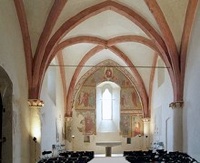
The walls of the church contain interesting graffiti left by Armenian pilgrims.
Frescoes (ca. 1273)
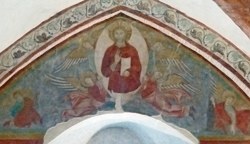
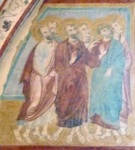
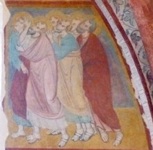
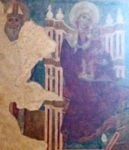
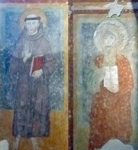
These frescoes on the altar wall, which are attributed to Maestro del Trittico Marzolini, include:
-
✴the Ascension of Christ, at the top;
-
✴the twelve Apostles, six to each side of the window;
-
✴the Madonna and Child with St Basil, at the bottom and to the left; and
-
✴figures of SS Francis and Matthew, at the bottom and to the right.
The monks probably honoured St Francis because the Franciscans were prominent in evangelising Armenia at this time. This is one of the earliest images of the saint with five stigmata in a non-Franciscan location.
Frescoes (mid-14th century)
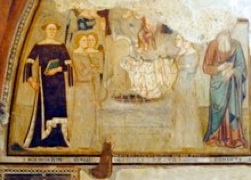
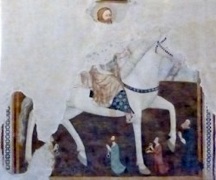
These frescoes, which were attributed to the Maestro Ironico during recent restoration, depict:
-
✴the Madonna enthroned with angels and saints and a kneeling donor, dated by inscription to 1348 (on the left wall); and
-
✴a mounted saint with kneeling supplicants in handcuffs (on the counter-facade).
This mounted saint is sometimes named as St Leonard, the patron saint of prisoners. However, a recent analysis of graffiti on the fresco suggests that Armenian pilgrims identified him as St Sergius (or Sarkis), a military officer who fled from what is now Turkey to Armenia in ca. 360 to escape persecution for his Christian faith. He then joined the Persian army, together with his son Martyros, but they were martyred for their faith by the Persian authorities.

